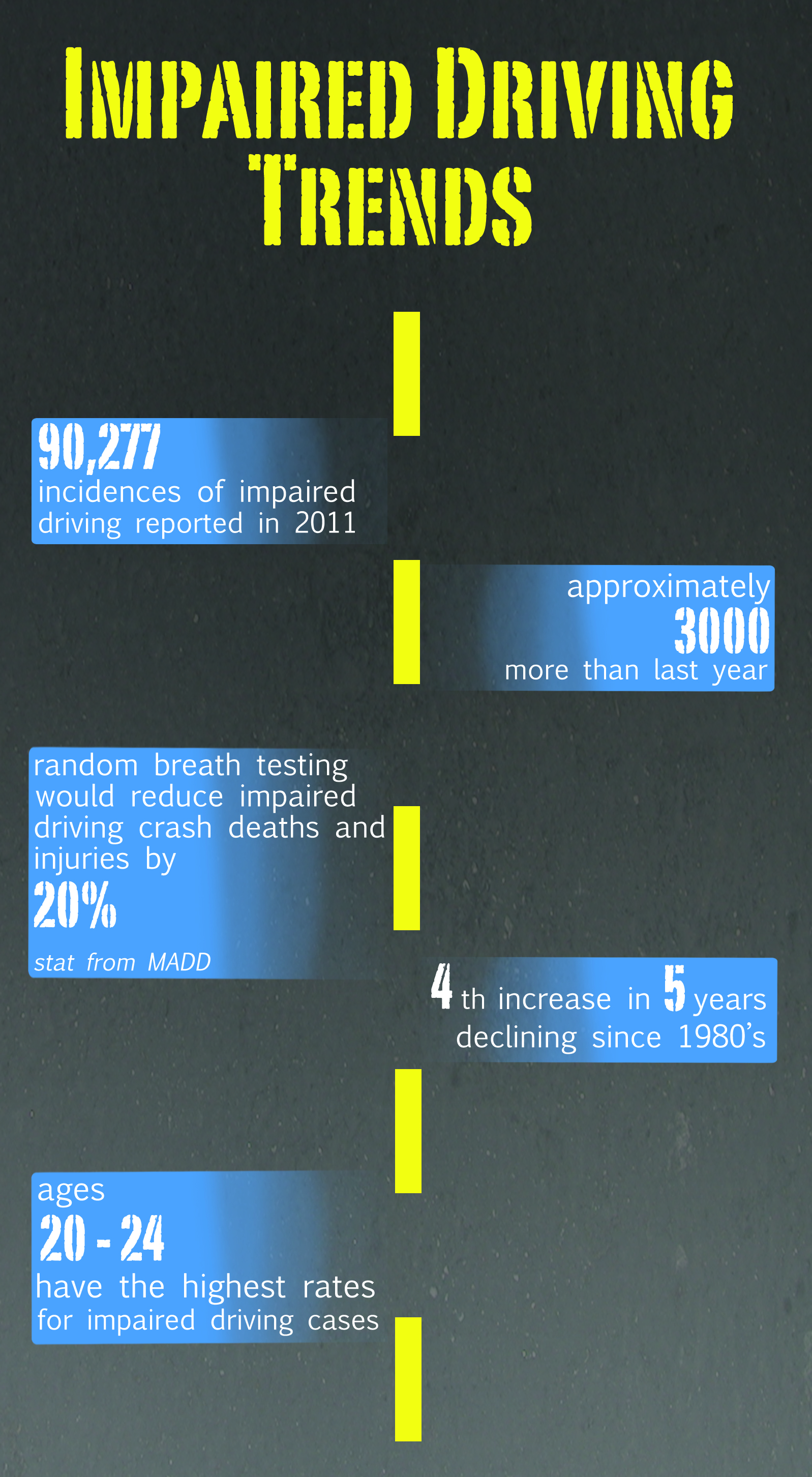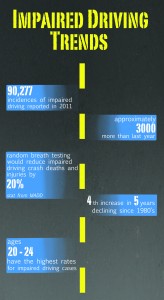Impaired driving sees rise in 2011


For the fourth year in a row, the frequency of impaired driving incidences in Canada is on the rise. Numbers recently released by Statistics Canada show that 90,277 impaired driving incidents were re- ported in Canada in 2011, which is about 3,000 more than in 2010.
These statistics include both drugs and alcohol when referring to impaired driving cases.
The report elaborates that this is the fourth increase that Canada has seen in impaired driving cases in the last five years. These rates had been steadily declining from the mid 1980s until 2006.
Owen Gallupe, a professor in the sociology and legal studies depart- ment at the University of Waterloo (UW), said in an e-mail to The Cord that, “If you look at the broader pattern, the increase from 2010 to 2011 appears to be no more than a blip.”
“The increase from 2010 to 2011 could be due to increased policing rather than an actual increase in offending,” explained Gallupe.
According to the Statistics Canada report, ages 20 to 24 have the highest rates for impaired driving cases.
Gallupe discussed why this age group’s rate is the highest, acknowledging that “young people are more prone to risk taking and young drivers simply have less experience behind the wheel.”
“I know someone who drove drunk to McDonalds and because of this he hasn’t had his license for two years now. He has to rely on his friends to drive him places all because of this one drunk mistake,” said Kelsey Jessup a third-year Wilfrid Laurier University kinesiology student
Adam Parsons, the president of the Waterloo Region chapter of Mothers Against Drunk Driving (MADD), claimed to have seen other patterns in their own data.
“MADD Canada has, in its own reports, noted some positive trends such as reduction in overall charges and provincial administrative sanctions between 2010 and 2011 as well as a decrease in the number of impaired related crash deaths,” he said.
Parsons went on to explain that MADD is pushing to get the government to implement random breath and saliva testing. Saliva tests are the equivalent of alcohol breath tests, but for drugs.
“If they’re smoking weed you can’t really smell it on someone’s breath necessarily, but it’s in their saliva. That way they will be able to test for that.” Parsons explained.
Random testing differs from R.I.D.E. programs because individual on-duty police officers would have the ability to stop drivers at random and test them for impaired driving.
Also, the random testing would allow police officers to catch the impaired drivers who may not be showing signs of intoxication.
“If we institute random breath testing we could reduce impaired driving crash deaths and injuries by 20 per cent,” Parsons expressed.
Although these statistics from the report show that the number of impaired driving cases has gone up by two per cent from the previous year, they also show that impaired crashes causing death was at the lowest it’s been in 25 years.
“It is far too early to say that things are getting worse.” Gallupe concluded.



